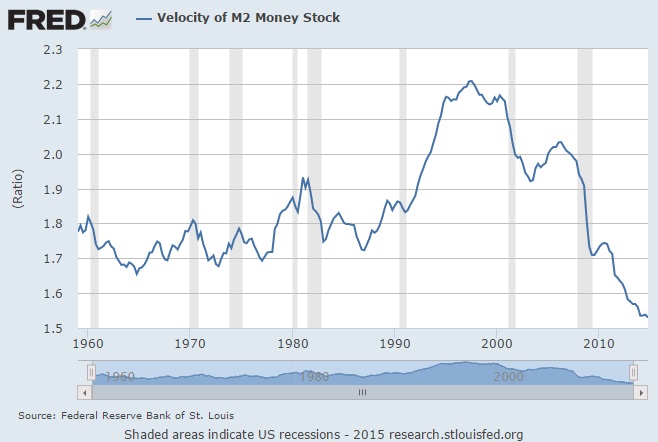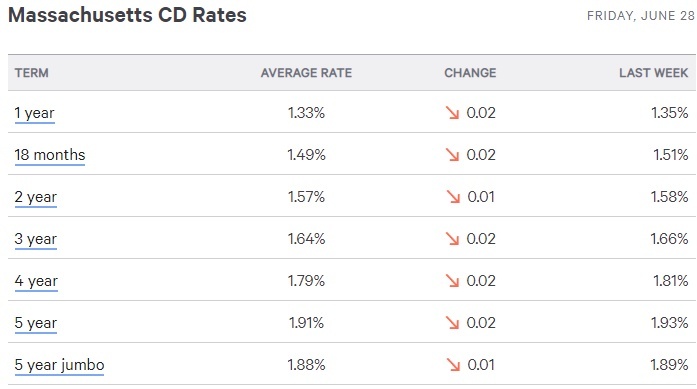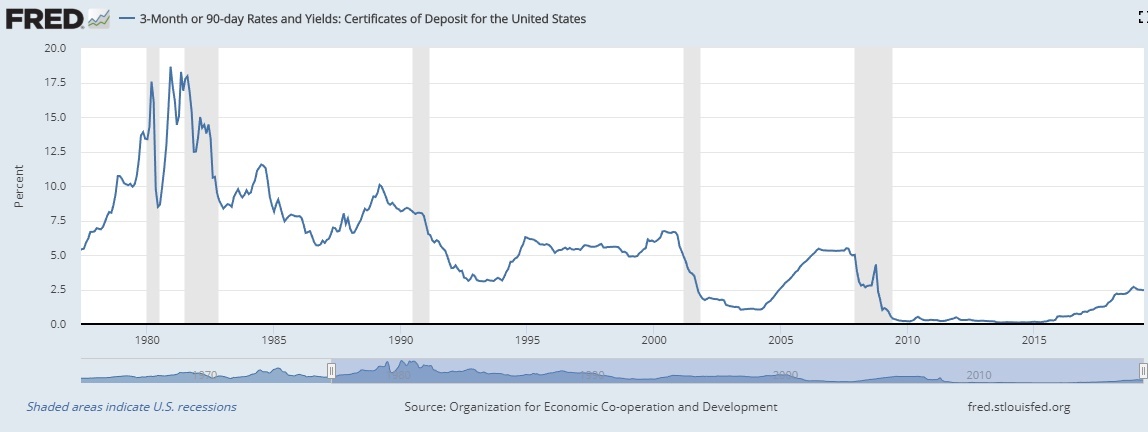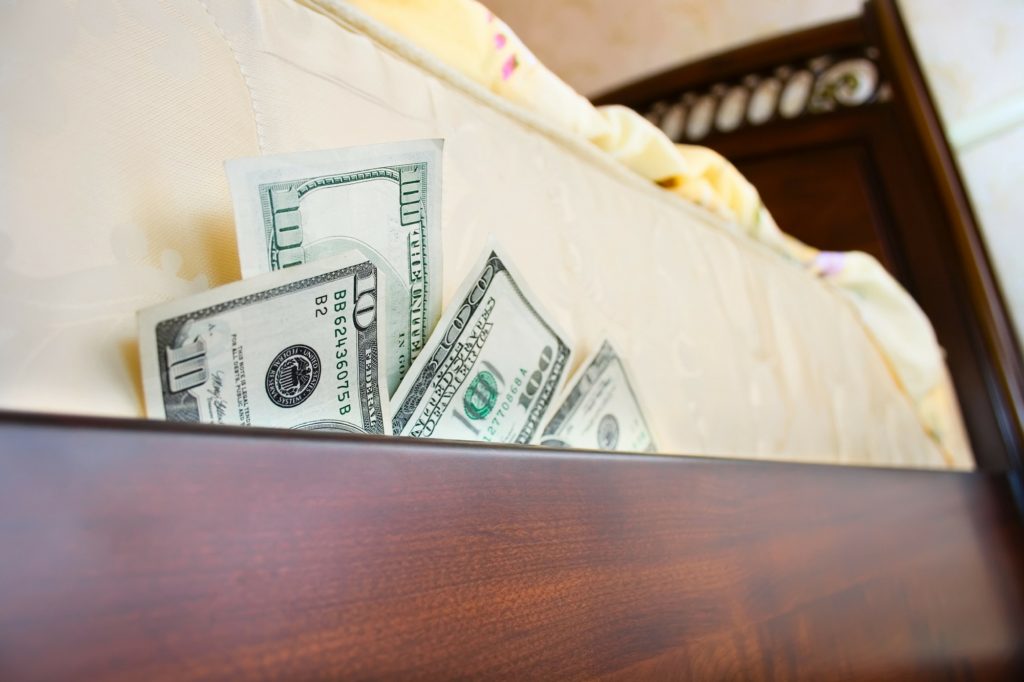“ “Risk-free return” is the standard tag attached to the government’s solemn obligations. An investor I know, repulsed by prevailing government yields, has a timelier description – “return-free risk”.” – Jim Grant
How absurd are negative interest rates?
I read a news story back in 2015 that in Denmark a person was able to get a business loan and get paid by the bank to do so. Entrepreneur Eva Christiansen earns about 1$ a month from a business loan she took out to grow her business. Let that sink in for a few minutes. She took out a loan, and instead of paying interest to the bank, she gets paid interest each month just for taking the bank’s money. What a great deal. Where do I sign up for one of these loans? If you are interested in what type of business she is running, that makes the story even better.
If you are asking the question of why would the bank pay this woman money each month to take their money, you wouldn’t be alone. I’m fairly certain that it has nothing to do with the type of business she runs, but it is mind-boggling to understand why a bank would pay someone to borrow money. Unless of course, you understood what was happening in Europe with interest rates.
Comparative bond yields
Sovereign bonds are bonds issued by a country to fund their government’s expenditures. Each country has its own bonds and they all have different rates according to their creditworthiness and ability to pay the interest payments and repay the principal.
The US 10 year Treasury is yielding around 2.09%. German 10-year sovereign bonds are yielding around 0.347%. Why would anyone invest in German bonds at 0.347%, with all the European debt problems, the potential for a breakup, as well as the potential conflict with their neighbor Russia, when they could get 2.09% in the US? While this difference seems like a large gap to bridge, it has been narrowing.
People all over the world are looking for yield. Individual investors, hedge funds, pension funds, and other institutions all need to invest their funds in fixed income. This keeps the bonds in high demand. While the US may have reasonably high sovereign bonds yields, it is likely that they will continue to drop until the yields are the equivalent of other developed countries.
How do interest rates work?
When the story came out, 5 of 12 countries had negative interest rates somewhere along the bond yield curve. That means that you would pay these countries to hold your money. While this may not make sense to a rational person, many European savers have concerns that are not typical.
Let’s say that you have some money and want to earn a low-risk rate of interest on those funds. One option you have is to visit your local bank and deposit those funds into a CD and earn interest on those funds. If the rate of interest was 1% and you were depositing $100,000, then annually you would get $1,000 in interest payments from the bank. This is the type of arraignment you are probably accustomed to, based on your personal experience as well as historical references. While you might think this rate of interest is quite low (historically it is), you are also taking very little risk to earn that rate of return.
Currently, many US banks are paying very little interest on deposits held there. This is primarily due to the Federal Reserve’s monetary policy that it has been pursuing since 2008. A few years ago the Fed started to raise interest rates to bring them back to historically normal levels. Recently, the Fed changed their tune again and yields have dropped significantly. This means CD rates have dropped as well. Here is a list of CD rates in Massachusetts.
As you can see from this list, rates for 1, 2, 3, & 5 year CDs are quite low. So are you getting paid enough for the risk you are taking?
The risk of lending money
When you give money to a bank in exchange for interest, you are lending them money. To put it in simple terms, you give them your money, $100,000 as in the above example, and they give you 1% or $1,000 annually. This means that you are risking the loss of your entire $100,000 in exchange for $1,000 plus your principal returned. This does not seem like a good trade-off to me.
Given the FDIC insurance that most banks carry in the US, the FDIC insures your $100,000 from loss ( up to $250,000). As long as the FDIC is solvent, you are guaranteed to get your money back. The risk is low for a loss of your principal and your interest is low as compensation for this low risk. Years back in early 2000, you could find CD rates between 5-6% annually. This is much better than the 1% or lower rate than you currently find.
Typically, the risk is correlated with the rate of interest. While banks offer low-interest rates, your funds are relatively safe. Investing into a corporate high yield or junk bond will pay a much higher rate of interest, but your risk of loss is also much higher.
In an environment with positive interest rates, the same environment every living person has experienced prior to the past few months, you get paid interest in exchange for lending money. But what if you didn’t…
Deflation and negative interest rates
“There are no bad bonds, only bad prices,” – Frequently used phrase by bond traders, origins unknown
Europe has experienced the beginnings of deflation on and off for the past few years. This should be apparent from their economic growth numbers as well as their yield curves which include negative rates. Germany, Belgium, France, Denmark, Netherlands, and Switzerland all have sovereign bonds with negative rates. Switzerland has a 10 year bond with a negative rate of interest. Could you imagine giving a bank or the federal government your money for 10 years only to have them return it for a lesser amount? It may seem absurd, but that is only because you have been living in a credit-based economy which has been expanding for decades.
What happens when the credit based economy starts to deflate? Despite the efforts of central banks, we will soon find out.
In order to understand what is about to happen, take everything you know about bonds, interest rates, credit, and risk, then throw it out the window. You will have to unlearn these things and observe the world from a different perspective. We are about to enter the twilight zone of economic history.
How do banks make money?
The banking system is built upon the theory that banks take depositors money at a lower rate than they lend it out. If you visit your local bank and deposit $100,000 to get 1% interest annually, that bank will take those funds and lend them out to a borrower at 4% and make $4,000 annually. The bank’s profit is the difference between the two rates, $3,000.
While banks make money in other ways, this is the primary purpose of a retail bank. Recently as rates have dropped, lenders have been less likely to lend. The fear is why would they lend money for a mortgage at 3.50-4.00% for 30 years? It seems like a no-win situation for the banks. But why would it matter to them if they are only profiting from the spread?
Historically, rates of interest have always been positive. Otherwise, why would you put your money in a bank? If interest rates were negative, it would be easier to keep it under the mattress than to lose money by depositing money at the bank.
Why do we have low and negative interest rates?
Deflation is a complicated concept for most people to understand. This is primarily because people who are under the age of 70 have never experienced it. Deflation is the contraction of credit and a decline in the price levels of goods and services. Europe is starting to experience this and Japan has experienced this for the past 25 years. This interest does not properly compensate bond investors for the risk they are taking, yet the rate remains. Why?
Deflation.
Deflation is the contraction or destruction of credit. It is essentially the process of normalizing an over-inflated economy. One of the side effects of deflation is the saver’s desire to pay down debt and put their funds in cash vs investing it. This shows up in the declining Velocity of Money. It means people are not spending money as they once were.

While the bond markets are too large to be physically influenced by any one person or institution, the Federal Reserve influences them with their press releases, speeches, and Federal Funds rate. Historically the Federal Reserve has used interest rates as one of their tools to combat recessions and slow economies which are inflating too much. Lowering interest rates in expectation of a recession should cause the economy to pick up, but there is no guarantee of this happening.
The Federal Reserve has lowered the Fed Funds rate effectively to zero. While this seems to have kick-started the US economy, it has also caused a lot of mal-investment. Junk bonds reached historically low yields of 5% on the Merrill Lynch HY Master II Effective Yield index. Japan has not been so lucky. They have had low-interest rates for 25 years and their economy is still experiencing deflation. Is this the type of yield that we should be expecting for years to come? Is the US going to turn Japanese?
What will happen if we have negative interest rates?
Negative interest rates are just another number. If the Federal Reserve and European Central Bank are insistent on lowering rates to kick-start their respective economies, why would they stop at zero? There is nothing special about zero. The trend is towards interest rates continuing to drop. Let’s assume that negative interest rates are in our future in the US (I’m fairly confident that this is the case). Let us look at what will happen in this type of situation.
- Depositing your money in a bank with negative interest rates will cause you to lose money. Why would you put money in a bank if it meant that you would have less when you take it out?
- If you borrow money, you could actually get paid interest for taking out a loan. Assuming you can get one.
- There will most likely still be a positive spread on interest rates allowing borrowing and lending to continue, but who knows how the banks will react.
- There will be a limit as to what banks could have their interest rates lowered to. While people may accept a -0.25% interest rate, they won’t accept a -3% interest rate before pulling their money out.
- Negative interest rates will cause people to hold their money in cash compared to at a bank. This will raise the risk of losing your savings from theft or loss from fire if you hold it outside the banking system.
- People will stop putting their money in banks and buy short terms bonds. Instead, they will consider putting cash into vaults and storage facilities. While it may cost them money to store it, they won’t lose it to interest or government confiscation as in the case of Cyprus.
- It is likely that the central banks would institute a heavy-handed policy to stop people from hoarding their cash. What they will propose is up for debate, but it won’t be good for the savers.
- Deflation will continue since lowering interest rates below zero will not help combat deflation. While the central banks can influence investor, saver, and consumer behavior, they cannot control them. These people do what is in their best interest (as they perceive it).
- Countries around the world are fighting a currency war, by seeing who can devalue their currency the most. This is done to gain a competitive advantage over other countries with their exports. This will not end until deflation is allowed to run its course, or there is a more violent conclusion of war. History suggests the latter is more likely.
Will negative interest rates stop deflation?
Some economists have theorized that deflation can be fought with negative interest rates. The theory is that zero percent should not be a barrier, but rather just another number. This academic experiment is taking place in Europe right now. We will see if the combination of negative interest rates and Quantitative Easing (QE) will help stop Europe from sliding into a deflationary spiral. I suspect that it will not. While this logic may seem sound in a classroom, it doesn’t account for a number of factors.
- There is no historical precedent – No one has any idea if these policies will work. They have not worked in Japan. So if the central banks don’t change their course we may be soon turning Japanese.
- Bank Risk – Once interest rates reach zero, there is no incentive to keep money in a bank other than keeping it safe from theft. While keeping money in banks may keep it safe from your neighborhood thieves, it does not keep it safe from government thieves. Cyprus is a good example of what can happen if you hold your funds at a bank. Overnight, Cyprus closed its banks and confiscated a percentage of the funds held in those banks. With the threat of this type of government theft, why would you trust holding your money at a bank for zero or negative interest?
- Negative Interest rates have limited effectiveness – Once people start experiencing negative interest rates from money in their bank account, they will withdraw their funds so they don’t lose money. For many years consumers in the US have experienced the benefit of no fee checking accounts. If rates continue to drop, that may start to change. JP Morgan just recently announced that they would start charging fees on big clients for some deposits. While this does not affect everyone, the writing is on the wall.
- Currency Wars – If what is happening is due to currency wars, then why would negative interest rates help? Each country could easily lower rates more negative.
- Deflation – Deflation is a natural market force that opposes inflation. Both are necessary and natural forces, but unless deflation is allowed to correct the problems in the system, it will not go away. It will only get stronger and more potent when it actually hits the inflection point. We are at that point now. Whether we can reverse course is unknown, but I suspect we may have passed it without knowing it yet.
What should you do if negative interest rates hit the US?
While I’m not prepared to move to Denmark quite yet. Getting paid to take out a loan is an interesting idea. The real question is how low are rates going to go? If it does become more common that banks lend at negative rates, how many people are going to apply for loans? What about mortgages? Business or personal loans? The negative interest rate environment will encourage savers to become spenders and borrowers. The future is not good with that type of short-term thinking.
If more credit is created through negative interest rates, that may jump-start the inflation process, but where is the limit? How much debt could you take out at negative interest rates before you have too much debt??? As much as they will give you.
I expect that I will be writing about this topic a lot in the near future. If you want to follow this blog, you can do so on social media, our RSS feed, and via our email list. Contact us if you want to learn more about how we can help you navigate this tricky low-interest rate environment. If you want to track inflation for free, you can read our monthly inflation monitor.
About Innovative Advisory Group: Innovative Advisory Group, LLC (IAG), an independent Registered Investment Advisory Firm, is bringing innovation to the wealth management industry by combining both traditional and alternative investments. IAG is unique in that they have an extensive understanding of the regulatory and financial considerations involved with self-directed IRAs and other retirement accounts. IAG advises clients on traditional investments, such as stocks, bonds, and mutual funds, as well as advising clients on alternative investments. IAG has a value-oriented approach to investing, which integrates specialized investment experience with extensive resources.
For more information, you can visit http://innovativewealth.com
About the author: Kirk Chisholm is a Wealth Manager and Principal at Innovative Advisory Group. His roles at IAG are co-chair of the Investment Committee and Head of the Traditional Investment Risk Management Group. His background and areas of focus are portfolio management and investment analysis in both the traditional and alternative investment markets. He received a BA degree in Economics from Trinity College in Hartford, CT.




